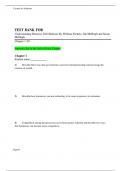Prüfung
Test Bank for Understanding Business 2024 Release By William Nickels, Jim McHugh and Susan McHugh Chapter 1-20
- Kurs
- Hochschule
Test Bank for Understanding Business 2024 Release By William Nickels, Jim McHugh and Susan McHugh Chapter 1-20
[ Mehr anzeigen ]



